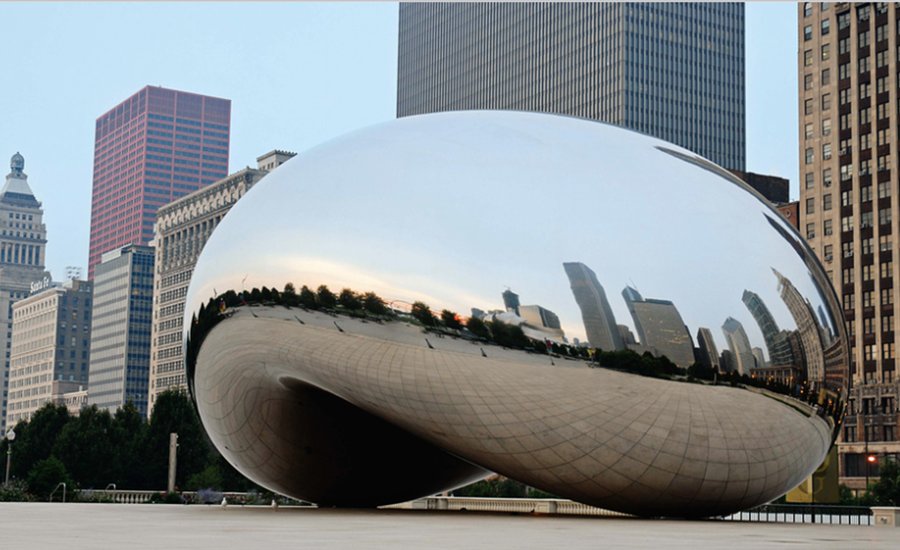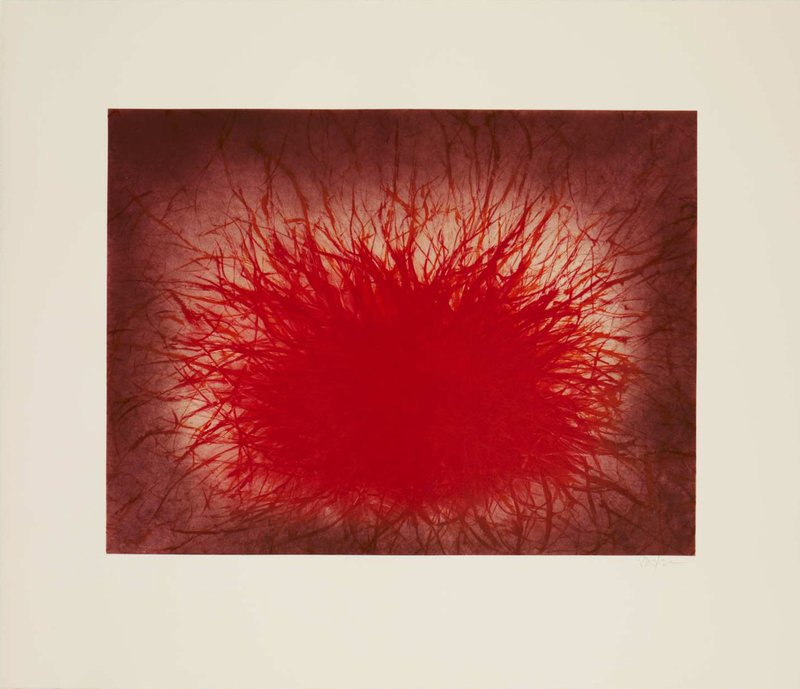Q&A
"Intuitive Intelligence Is the Highest Kind": Anish Kapoor on Spirituality and Intuition in Contemporary Art

The following conversation between Anish Kapoor and William Furlong took place in Venice in 1990, and is excerpted from Phaidon's Speaking of Art: Four Decades of Art in Conversation.
Born in Bombay, Anish Kapoor (b. 1954) has been based in London since the 1970s. He employs a distinctive set of materials—from the traditional (marble, bronze) to the high-tech (stainless steel, fiberglass)—to create sculptural abstractions that explore psycho-perceptual phenomena with the morphology of the human body. In its pursuit of the sublime and the uncanny, his work draws traces a historical lineage back through Abstract Expressionism to German Romantic painting and beyond. In 1990 he represented Great Britain at the Venice Biennale, where this interview took place, and he was awarded the Turner Prize the following year.
 Anish Kapoor, Leviathan (2011), image courtesy of Lisson Gallery
Anish Kapoor, Leviathan (2011), image courtesy of Lisson Gallery
Something that keeps recurring when I think about the pieces I see here, and about your work in general, is a comment you once made: "I don’t wish to make sculpture about form. It doesn’t really interest me. I wish to make sculpture about belief or about passion or about experience." I think a much broader approach needs to be adopted in perceiving what you do.
I think that’s probably true. Over the last ten years or so, there has been a tendency to see the work in terms of my background, and I feel that’s a shame. It has really not allowed me to deposit what I feel might be possible. But it has also restricted other people’s experience of the work. It’s a battle that has been fought and will continue to be fought.
Some people have said that the notion of the spiritual, which is often used in discussing your work, is a welcome addition to the vocabulary of art criticism of recent contemporary work.
For a long time now spiritualism has been a taboo subject. It has been something that one has not been able to deal with properly. Yet it is a fundamental of the human condition, and we must somehow deal with it. It is a treacherous path to tread, I think, between the meaningless talk of the 1960s and real things. As human beings we have consciousness, and that must be dealt with on some level.
And yet it appears to have been denied.
I think artists have dealt with it. I am not so sure that those who write about art have been able to deal with it. It requires, on some levels, a great deal of intelligence and humility.
Having read a lot about your work in preparing for this conversation, I have an instinctive feeling that something quote fundamental is being missed very often and that, perhaps, a Western literary tradition isn’t a very adequate way of discussing what you do. At the end of the day, the work is here, it has its presence, and the words have their presence, but the two don’t seem to me to correspond.
I think we are talking about experience. I don’t think it is enough to talk about the spiritual or such things and leave them as ideas. One has somehow to have this whole thing—experiential and not just intellectual. I would follow, to a certain extent anyway, Joseph Beuys’s notion about the spiritual—that intuitive intelligence is the highest kind of intelligence and that, in the end, intuitive sense is all one has to go on—as an artist of my kind, anyway.
Standing here, watching people coming through this gallery, looking, responding. I get the sense of a site.
Yes, the idea of place has always been very important to my work. A place that is, in a sense, original. I mean, by the word original, to do with "first," and I think that is to do with centering oneself—allowing a thing to occur specifically rather than in general. A lot of my works are to occur specifically rather than in general. A lot of my works are about passage, about a passing through, and that necessitates a place.
I am reminded of the early Aboriginal response to the first British settlers in Australia, where the notion of ownership didn’t have a corresponding concept—it was much more to do with place and site and relevance to a particular area.
I think Barnett Newman also had a very sophisticated and concise way of understanding that art needed to occur in a place. He often used the Hebrew word makom to refer to the present and the beyond in his painting. That is an area I am engaged in.
 Anish Kapoor, Mirror (Cobalt Blue to Magenta over Pagan Gold), 2016, image courtesy of Lisson Gallery
Anish Kapoor, Mirror (Cobalt Blue to Magenta over Pagan Gold), 2016, image courtesy of Lisson Gallery
In relation to the starting point, is there a linear thread that you actually trace in these series of works? With the powder pieces, such as 1,000 Names, there is much more of a correspondence and relationship within the sequence, but something like Void Field seems quote independent of that sequential development.
It is. Works feed off each other and grow out of each other. Here I think the work forms itself both in the room and in the emptiness of the room, or in the conjunction between emptiness and fullness. That is not to do with specific physical relationships between the objects but really much more to do with some specific relationship between the body and the objects, which I think is slightly different. That, I think, is quite a change from my early work.
There is no sense of the artist’s hand here.
We have just come through a whole period of expressionism, of artists depositing themselves in their works. I just don’t believe in it. I don't believe that artists have anything to say. I think there must be a way, and there is a way, of arriving at a conjunction of things that have their own reality, quite independent of the artist. Leaving the hand out has always been a feature of my work. Covering things with pigment was a way of removing the hand. Similarly here, as you say, there is very little hand. Of course, that is also something that's part of a post-Minimalist tradition, I guess.
You have said on a number of occasions that your work is completed by the person looking at it. Could you elaborate on that statement?
It has to do with me not saying too much, not being overly present. One thing that has happened very clearly in my work is that, from being about the outside of forms with inside implied in the early pieces, it has since turned into a condition about inferiority, and in some way I seem to have discovered that emptying out is filling up, and filling up is only with that you, the viewer, can bring.
We are standing in front of a large piece called Madonna. The diameter of it is about nine or ten feet, and if one stands about four feet away and looks at it, it is very displacing. One loses one's orientation, which I resume is really a product of its deep blue color. One is drawn into it, and it's quite disrurbing, in a very interesting way.
Well, I always had this ambition to make something totally frightening. This isn't, but it will happen to me when I can do it.
Color clearly is very important in your work.
Yes, it is. In a way, this whole show is about a conjunction of opposites. That has always been a feature of what I do. Here the conjunction is between that which is physical and present and that which is not. It is not enough, I think, to speak about a void as an entity. In some ways it needs to be physically present, it needs to be experienced, it needs to be there—as big a reality as it can be.

No comments:
Post a Comment